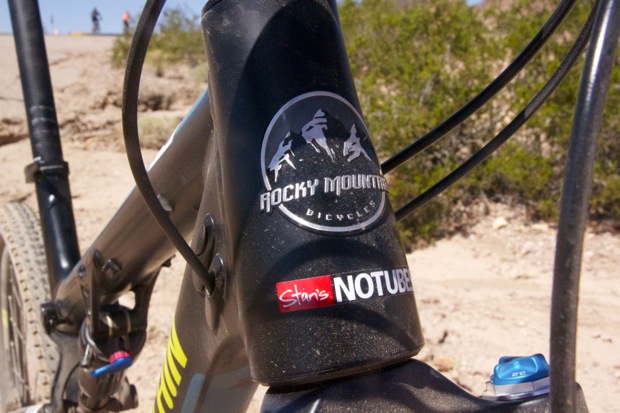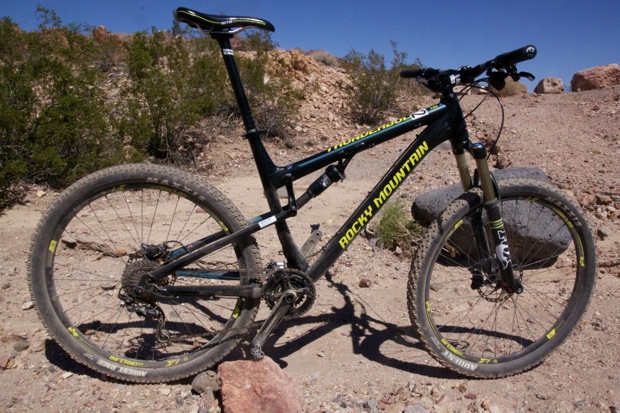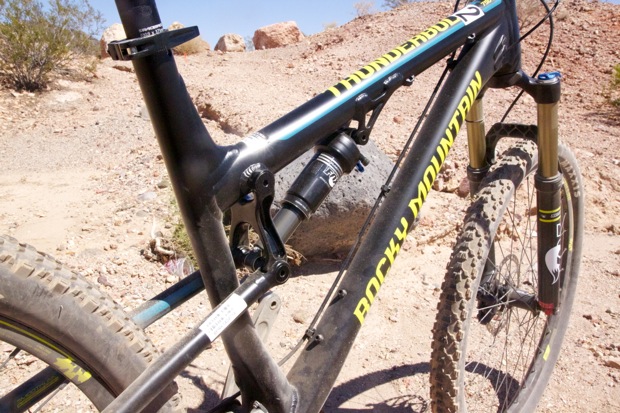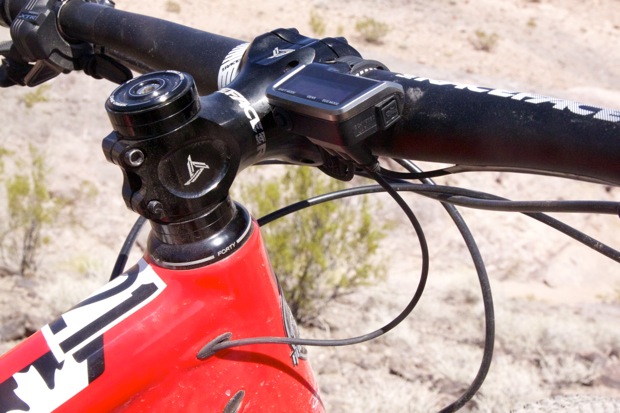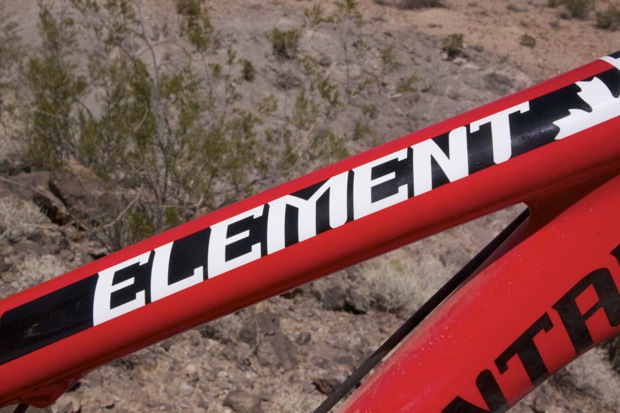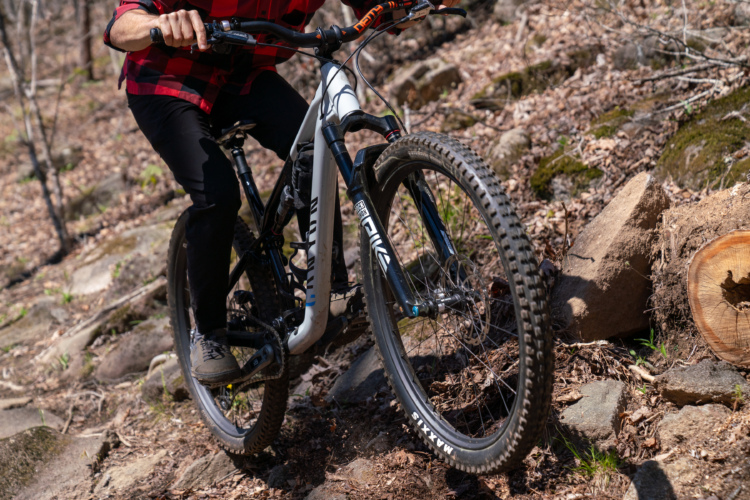At Outdoor Demo on Tuesday I got to ride two Rocky Mountain bikes back-to-back–the Thunderbolt and Element–to see where one leaves off and the other takes over. While each bike has a slightly different intended use, both have the same playful Rocky Mountain feel many of us have come to know and expect from the brand.
Rocky Mountain Thunderbolt 750
The Thunderbolt is a 27.5 wheeled bike that features 120mm of front and rear travel and Rocky Mountain classifies this rig as XC Trail. Note there isn’t a slash between XC and Trail in the designation; this bike sits comfortably between XC and Trail, unlike XC/Trail bikes that can be a bit more schizophrenic.
With 422mm chainstays, the Thunderbolt is designed to be playful and responsive in turns. The head tube angle is a slack-but-not-too-slack 68.5°, which helps this bike climb fairly efficiently while still being playful. Compared to the Element, which is billed as a full-blown XC bike, the Thunderbolt is a full 2 degrees slacker.
I’m a tall guy and normally gravitate toward bigger wheels and longer chainstays so the Thunderbolt felt like a sports car to me, capable of weaving in and out of rock gardens and railing turns in comfort. On the climbs I missed my wagon wheels a bit but luckily the Thunderbolt is a lightweight rig with an efficient pedaling suspension platform (Rocky Mountain’s Smoothlink.) And in technical climbing situations, the Thunderbolt’s agility really shines.
MSRP is just $2,999 on the 750 build, making this an affordable choice for riders looking for a fun and agile 27.5 mountain bike.
Rocky Mountain Element 999 RSL
The Rocky Mountain Element 999 RSL is one of the first production mountain bike builds to feature Shimano’s Di2 XTR electronic drivetrain, and that’s generating a lot of interest in this venerable steed. With 22 electronically-actuated gears to choose from, the Element 999 RSL is an XC rider’s dream. The Element 999 RSL is designed with an internal battery compartment specifically for Di2 and internal wire routing for a super clean look.
Unlike the Thunderbolt, the Element features 29er wheels and, as I mentioned above, a steeper head tube angle at 70.5°. The seat stays are just millimeters longer at 445mm, giving this bike the same playful Rocky Mountain feel as the company’s other offerings.
With the larger wheels the Element definitely seemed to climb more comfortably for me, though it retained many of the same characteristics that make the Thunderbolt a capable descender. Even though the Element features just 100mm of travel–solid XC territory–it felt like the suspension had a lot more to give.
At $10,000+ for the 999 RSL build, this bike is out of most riders’ price range, though clearly much of that cost is for the Di2 drivetrain. Moving down a notch to the 970 RSL build cuts the price in half with essentially the same ride characteristics of the 999.
Rocky Mountain had made a name for itself producing agile, playful bikes for riders who like to get a little more aggressive through turns and descents no matter if they’re XC, Trail, or Enduro. Judging by the Thunderbolt and Element bikes I tested, the company has a cohesive line-up that’s nearly seamless as the bikes progress in travel, offering riders a consistent platform for getting rad!

